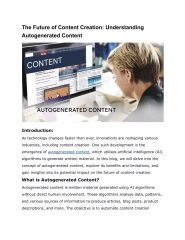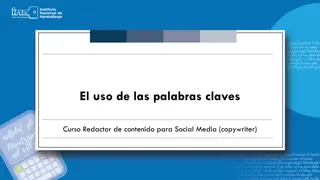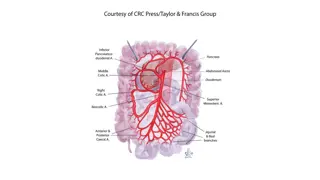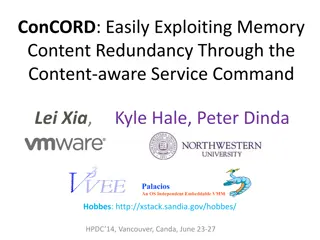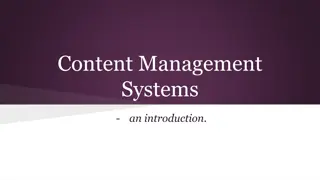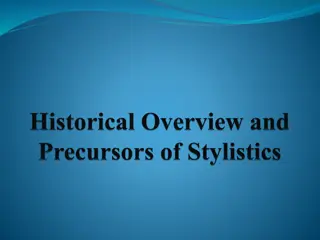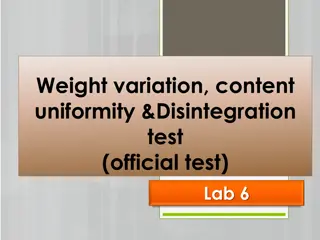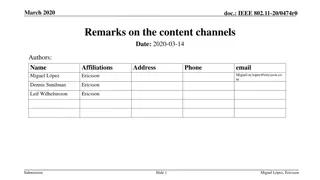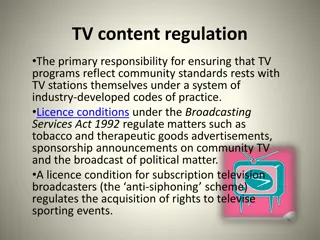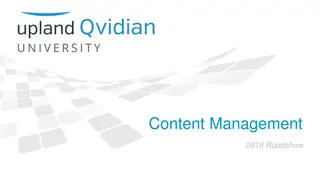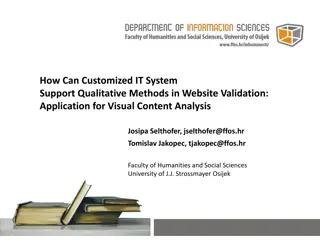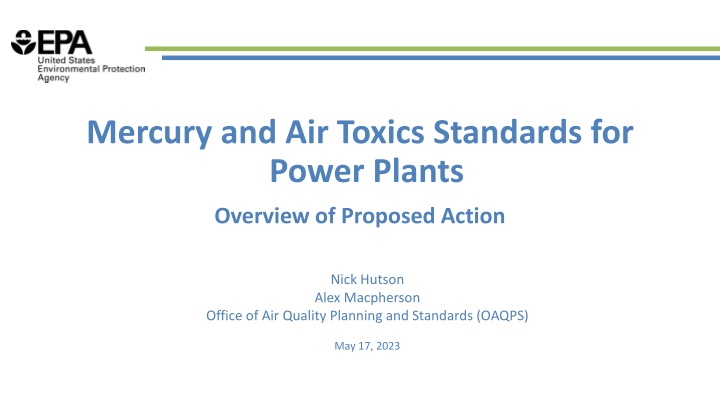
Overview of Proposed Changes to Mercury and Air Toxics Standards for Power Plants
Learn about the regulatory history, risk and technology review, and proposed actions regarding Mercury and Air Toxics Standards for Power Plants. The EPA's review includes potential changes such as lowering standards for particulate matter, requiring new compliance monitoring systems, tightening mercury standards, and more.
Download Presentation

Please find below an Image/Link to download the presentation.
The content on the website is provided AS IS for your information and personal use only. It may not be sold, licensed, or shared on other websites without obtaining consent from the author. If you encounter any issues during the download, it is possible that the publisher has removed the file from their server.
You are allowed to download the files provided on this website for personal or commercial use, subject to the condition that they are used lawfully. All files are the property of their respective owners.
The content on the website is provided AS IS for your information and personal use only. It may not be sold, licensed, or shared on other websites without obtaining consent from the author.
E N D
Presentation Transcript
Mercury and Air Toxics Standards for Power Plants Overview of Proposed Action Nick Hutson Alex Macpherson Office of Air Quality Planning and Standards (OAQPS) May 17, 2023
Regulatory History In December 2000, the EPA made an initial determination that it is appropriate and necessary to regulate coal- and oil-fired power plants under Clean Air Act (CAA) section 112. After several attempts and legal challenges, the EPA, in April 2012, reaffirmed the appropriate and necessary finding and established emission standards for hazardous air pollutants, as prescribed in the CAA, based on the maximum achievable control technology (MACT). Combined with other changes affecting the power sector, MATS has driven sharp reductions in harmful air toxic pollutants from coal- and oil-fired power plants. Industry-reported emissions data, required by MATS, shows In 2021 mercury emissions from coal-fired EGUs were 90 percent lower than pre-MATS levels. Acid gas HAP emissions have been reduced by over 96 percent. Emissions of the non-mercury metals including nickel, arsenic, and lead have been reduced by more than 81 percent.
Risk and Technology Review (RTR) Within 8 years of promulgating standards, the CAA requires EPA to conduct a residual risk and technology review (RTR) CAA section 112(f)(2): update standards if needed to provide an ample margin of safety to protect public health CAA section 112(d)(6): review and revise the standards as necessary taking into account developments in practices, processes, and control technologies The EPA completed the RTR in 2020, determining no revisions in standards were warranted under 112(f)(2) and 112(d)(6) This action is in response to Executive Order (EO) 13990 (January 2021), which instructed EPA to consider publishing a notice of proposed rulemaking suspending, revising, or rescinding the 2020 RTR Final rule reaffirming it was appropriate and necessary (A&N) to regulate electric utility steam generating units (EGUs) under CAA section 112 was published March 6, 2023 (88 FR 19356).
This Proposed Action [88 FR 24854; April 24, 2023] When the EPA began reviewing the 2020 Supplemental Finding and RTR pursuant to EO 13990, we solicited information on the performance and cost of new or improved technologies that control hazardous air pollutants (HAP) emissions, improved methods of operation, and risk-related information to further inform the Agency s review of the MATS RTR Based on the review of the RTR in addition to the comments received, the EPA is proposing the following changes to MATS: 1. Lowering the standard for filterable particulate matter (fPM), the surrogate for non-mercury metal hazardous air pollutants, for coal-fired EGUs 2. Requiring EGUs demonstrate compliance using PM Continuous Emissions Monitoring Systems (CEMS) 3. Tightening the mercury standard for lignite-fired EGUs 4. Removing startup definition #2
This Proposed Action Similarly, based on the review of the RTR and comments received, the EPA is not proposing changes to the: Organic HAP work practice standard o The EPA found no developments that would result in cost-effective emission reductions of organic HAP o EPA will respond to petition for reconsideration from environmental organizations in a separate action Acid Gas Standards for Coal-Fired EGUs o No new control technologies or any improvements to existing coals were identified that may result in additional cost-effective acid gas emission reductions Continental Liquid Oil-Fired EGUs o These EGUs have low capacity factors and are mostly using fuels with low metal HAP emissions Non-Continental Liquid Oil-Fired EGUs o Low capacity factors for EGUs in Hawaii and near-term retirements and fuel switching for EGUs in Puerto Rico
Summary of 2020 RTR The residual risk review concluded that the current MATS requirements provide an ample margin of safety to protect public health in accordance with CAA section 112 More stringent standards not necessary to prevent an adverse environmental effect There are 4 facilities in the source category with cancer risk at or above 1-in-1 million, all of them were oil-fired EGUs located in Puerto Rico The technology review determined that existing air pollution control technologies that were in use were well-established and provided the capture efficiencies necessary for compliance with MATS This review did not consider developments in the cost and effectiveness of these proven technologies, nor did the EPA evaluate the current performance of emission reduction control equipment and strategies at existing MATS-affected EGUs, to determine whether revising the standards were warranted
Review of the 2020 Residual Risk Review The EPA did not receive any new information in response to the 2022 Proposal that would affect the EPA s 2020 residual risk analysis or decisions emanating from that analysis In reviewing the 2020 residual risk analysis, the EPA determined the risk analysis was a rigorous review and was conducted using approaches and methodologies that are consistent with those that EPA has utilized in risk reviews for other industrial sectors Additionally, the results indicated low residual risk from coal- and oil-fired EGUs The EPA acknowledges it received a petition for reconsideration from environmental organizations that, in relevant part, sought the EPA s reconsideration of certain aspects of the 2020 residual risk review which the EPA continues to review and will respond to in a separate action
Review of 2020 Technology Review The review focused on the identification and evaluation of any developments in practices, processes, or control technologies that have occurred since 2012 and since the 2020 technology review Based on this review, the EPA concluded that developments in the costs and effectiveness of control technologies, as well as the related fact that a vast majority of sources are outperforming the current MACT standards, warrant certain revisions
PM Standard for Existing Coal-Fired EGUs The EPA expanded upon the 2020 technology review to assess filterable PM emission performance of coal-fired EGUs Evaluated recent quarterly filterable PM emissions from coal units >25 megawatts (MW) without pre-2029 retirement plans Does not account for projected retirements (e.g., retirements related to IRA) All affected coal-fired EGUs are operating below the MATS PM emission standard of 0.030 pounds per million British thermal units (lb/MMBtu) Evaluated 3 potential standards: 0.015 lb/MMBtu: MATS PM Low Emitting EGU (LEE) alternative 0.010 lb/MMBtu: approximately the MATS PM new source standard / NSPS 0.006 lb/MMBtu: Average value of the PM rate distribution from the 2010 ICR data Since compliance data shows a significant portion of the coal- fired EGUs are performing well below the allowed emission limit and because the EPA received information indicating lower costs to improve controls to achieve additional PM reductions, the EPA concluded there were developments that warranted revising the standard of EGUs meet standard Baseline PM Rate Of capacity meets 0.015 lb/MMBtu Of capacity meets 0.010 lb/MMBtu Of capacity meets 0.006 lb/MMBtu
PM Standard for Existing Coal-Fired EGUs The EPA is proposing to set the filterable PM limit for coal-fired EGUs to 0.010 lb/MMBtu and seeks comment on whether it should finalize a more stringent standard The 0.010 lb/MMBtu limit is proposed because this standard: Ensures the very worst performers bring their performance level up to where a vast majority of the fleet is performing Is technologically feasible and demonstrated for a range of control configurations Appropriately takes into account the costs of control by requiring improvements instead of new installations Balances the critical importance of reducing HAP under CAA section 112(d)(6) with costs to the industry The EPA is soliciting comment on finalizing the most stringent standard, 0.006 lb/MMBtu because: This standard would achieve greater HAP emission reductions 72% of the existing capacity already achieves this standard Cost assumptions may be unnecessarily conservative, and therefore cost-effectiveness may be considerably lower than estimated Potential fPM Emission Limit (lb/MMBtu) 1.5E-02 1.0E-02 6.0E-03 Affected Units (Capacity, GW) 8 (4.02) 20 (9.34) 65 (32.9) Annual Cost ($M) 13.9 - 19.3 77.3 - 93.2 633 fPM Reductions (tons/year) 463 2,074 6,163 Total non-Hg metal HAP Reductions (tons/year) 1.41 6.34 24.7 Total non-Hg metal HAP Cost Effectiveness ($k/ton) 9,860-13,700 12,200-14,700 25,600
PM Monitoring EGUs are required to conduct quarterly stack testing or use PM CEMS along with quarterly reporting - to show compliance with the PM emission standard Costs of stack testing and PM CEMS have decreased since promulgation of MATS Review of reports submitted to WebFIRE and ongoing ICR renewals shows PM CEMS are more cost- effective for compliance purposes, but only used by about 1/3rd of EGUs Requiring PM CEMS would allow increased transparency and would allow for accelerated identification of anomalous emissions EPA is proposing to require installation of PM CEMS to demonstrate compliance This renders the LEE option for fPM superfluous, so EPA also proposes to remove the fPM and the individual and total HAP metals from the LEE program
Mercury Standards for Coal-Fired EGUs In July, EPA received information on lignite-fired EGU mercury emissions and controls through a CAA section 114 request In 2021, 16 of the top 20 mercury emitting EGUs were lignite-fired Lignite-fired EGUs are located in North Dakota, Texas, and Mississippi EGUs utilized a variety of mercury control strategies The mercury removal rate at these facilities ranged from 58-99% Most (but not all) used some combination of sorbent injection and chemical additive Several sources noted that the sorbent injection feed rate is adjusted to maintain a mercury CEMS reading below 4.0 lb per trillion British thermal units (4.0 lb/TBtu) on a 30-day rolling average basis; Average sorbent injection rate ranges from 10 65% of the maximum sorbent injection rate (average of 36%) Several EGUs used refined coal which is typically made by mixing proprietary additives to feedstock coal The refined coal production tax credit expired at the end of 2021 Several Texas EGUs burned substantial amounts of subbituminous coal Many units demonstrated an ability to achieve mercury emission rates much lower than the MATS standard for lignite-fired EGUs
Mercury Standards for Coal-Fired EGUs The technology review indicates there are cost-effective control technologies and methods of operation to allow lignite-fired EGUs to achieve additional mercury emission reductions The EPA proposes to tighten the mercury standard for lignite-fired EGUs from 4.0 lb/Tbtu to 1.2 lb/TBtu, which is the same numeric standard for EGUs firing on non-lignite coals (i.e., bituminous or sub-bituminous) The EPA is also soliciting comment and additional information on control technologies and emission reduction opportunities at non-lignite-fired EGUs
Startup Requirements MATS currently has two options for defining the startup period for affected EGUs: Definition #1 specifies that startup ends when steam is used for generation or any on-site purpose; it requires clean fuel use for ignition and control device use when coal or oil combustion begins (except for dry scrubber or selective catalytic reduction units, which come online as conditions allow) Definition #2 specifies that startup ends four hours after the start of generation of electricity or useful thermal energy o Owners or operators must record and provide clean and non-clean fuel use, and load characteristics, as well as exhaust flow and PM control device parameters o Currently fewer than 20 EGUs are utilizing Startup Definition #2 On March 13, 2020, EPA s denial of environmental groups petition for reconsideration regarding MATS startup work practices was remanded to EPA by the D.C. Circuit for further consideration (Chesapeake Climate Action Network, et al. v. EPA) The court found that EPA erred in denying the petition, which objected to Startup Definition #2 The EPA identified 14 EGUs that chose to use definition #2, six of which have retired and one that will retire by 2025 Consistent with MACT standards for using the average of the best performing 12 percent of sources, the EPA proposes to remove the alternative work practice standard (definition #2) Such a change is achievable by all EGUs and would result in little to no additional expenditures
Summary of Cost, Environmental, and Economic Impacts EPA projects that the proposed changes would result in the following emissions reductions in the year 2035: 82 pounds of mercury; 800 tons of fine particulate matter (PM2.5); 8,800 tons of sulfur dioxide (SO2); 8,700 tons of nitrogen oxides (NOx); and 5 million tons of carbon dioxide (CO2). EPA estimated health benefits, climate benefits, compliance costs, and net benefits of the proposed revisions to the MATS rule in a Regulatory Impact Analysis (RIA). The RIA includes the estimated present values and equivalent annualized values, calculated using discount rates of 3 and 7 percent. The quantified benefits are estimated from projected changes in PM2.5 and ozone concentrations, as well as reductions in greenhouse gas emissions. Potential benefits from reducing mercury and non-mercury metal HAP were not monetized and are, therefore, not reflected in the benefit-cost estimates associated with this proposal. Present value: The present value of benefits and costs of this action are calculated over the 10-year period from 2028 to 2037. EPA projects the present value of net benefits to be $2.4 billion to $3.0 billion. This includes $1.2 billion to $1.9 billion in health benefits, $1.4 billion in climate benefits, and compliance costs of $230 million to $330 million. Annual value: EPA projects the estimated annualized value net benefits to be $300 million to $350 million. This includes $170 million to $220 million in health benefits, $170 million in climate benefits, and compliance costs of $33 million to $38 million.
How to submit comments EPA will accept comment on the proposal until June 23, 2023. Comments, identified by Docket ID No EPA HQ OAR 2018 0794, may be submitted by one of the following methods: Go to https://www.regulations.gov/ and follow the online instructions for submitting comments. Send comments by email to a-and-r-docket@epa.gov, Attention Docket ID No. EPA HQ OAR 2018 0794 in the subject line of the message. Fax your comments to: (202) 566-9744, Attention Docket ID No. EPA HQ OAR 2018 0794. Mail your comments to: EPA Docket Center, Environmental Protection Agency, Mail Code: 28221T, 1200 Pennsylvania Ave, NW, Washington, DC 20460, Attention Docket ID No. EPA HQ OAR 2018 0794. Deliver comments in person to: EPA Docket Center, 1301 Constitution Ave., NW, Room 3334, Washington, DC. Note: In-person deliveries (including courier deliveries) are only accepted during the Docket Center s normal hours of operation. Special arrangements should be made for deliveries of boxed information.

